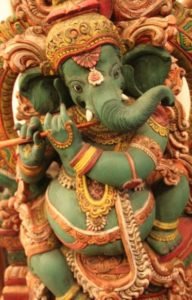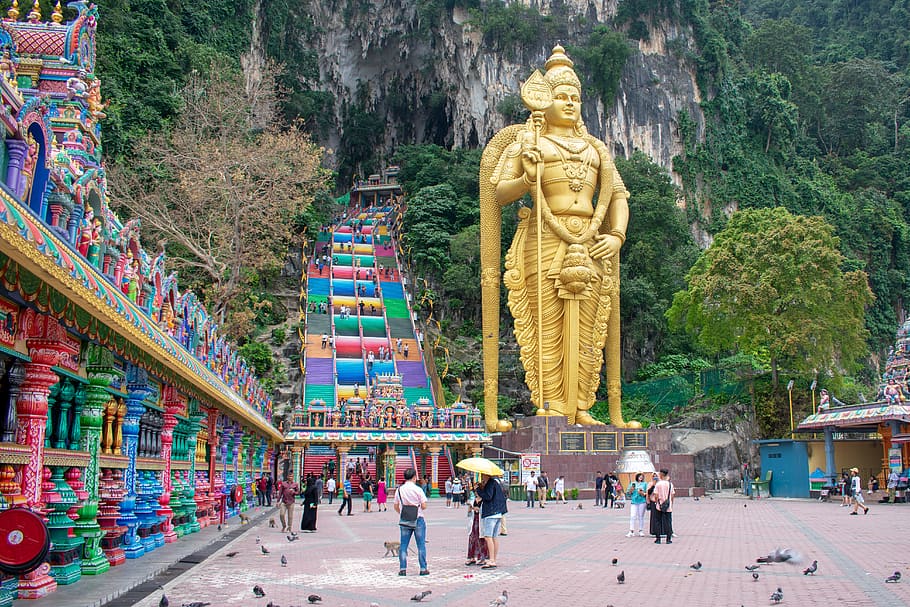Hinduism, the third-largest religion in the world next to Islam and Christianity, was initiated in India. “Hinduism differs from Christianity and other Western religions in that it does not have a single founder, a specific theological system, a single system of morality, or a central religious organization. It consists of “thousands of different religious groups that have evolved in India since 1500 BCE.” (Robinson, 2006) Sanatana Dharma, meaning “eternal religion”, and Vaidika Dharma, meaning “religion of the Vedas”, are two other names of the religion. Some believe Hinduism derived from the Persian word for Indian, but there is no significant evidence this is the only source.
The religion of Hinduism is practiced all over the world.
The major regions practicing this type of worship in India and Nepal having the majority of the 13% worldwide members and believers who partake in the rituals of worship and the origin of the ways of life. (Robinson, 2006) The Indo-Aryan invasion, the light-skinned Indo-European tribal people introduced Vedism to India caused part of the evolutionary changes in the religion. Vedism a similar make up of Christianity was introduced to the people of India in contrast to their present belief. The native Indians agreed to the Old Testament scriptures forming the “age of the earth” thus, developing the four Veda and Upanishad Hindu religious texts. (Robinson, 2006) The literal aspects of the Old Testament were adhered to by forming the next texts and influencing their present belief system.
 There are four castes or divisions of Hinduism: “Brahmins, the priests or academics, Kshatriyas, the rulers and military, Vaishyas, the farmers, landlords, and merchants, and Sudras, the peasants, servants, and workers.” (Robinson, 2006) The social classes define bridges between the gods and their favor toward men. Each group has an individual goal in their level to produce oneness with an ultimate being or god.
There are four castes or divisions of Hinduism: “Brahmins, the priests or academics, Kshatriyas, the rulers and military, Vaishyas, the farmers, landlords, and merchants, and Sudras, the peasants, servants, and workers.” (Robinson, 2006) The social classes define bridges between the gods and their favor toward men. Each group has an individual goal in their level to produce oneness with an ultimate being or god.
For example, in Ganesha, the god of good fortune, is in contrast to the people who strive for moksha the people aim to deprive themselves of life’s pleasures or kama in order to escape the cycle of death and rebirth or samsara. This type of person would not indulge in delicacies of any sort in order to accomplish their goal. Beliefs such as reincarnation, death to rebirth in a new body and raja yoga, a psycho-physical mediation to define reality or moksha, are some of the basic areas of thought in the religion. (Flesher, 1996) The belief in God is essential, but it is broken down into other gods and goddesses, making all equal. The Hindu religion is formed from a vast area of beliefs leading to an origin of definition in all aspects of life. Ages from birth to old age have a breakdown in beliefs characterized as the stages of life. This maintains the flow of life in regard to keeping each individual on a schedule of faith. Since religion does not depend on one deity or source of power, the other beings are places in which they can define their existence and reason for worship. This formation of Hinduism makes in contradictory to other faiths such as Islam and Christianity.
Influences from the Indo-Aryan people have evolved the religion.
Reading material of other faiths, prompt Hinduism to form their own scriptural texts and beliefs. To create an atmosphere beyond the worldly desires in creation influences the people to maintain their practice in the belief. Yoga is the self-discipline and meditation to separate a person from the earthly realm and the internal soul. This is commonly practiced and more people want to get in the stage beyond reality and existence. The separation from the atman, or common self, and the Brahman, “the power behind and within the cosmos that makes it function and live”, is the primary goal. ( Flesher, 1996) The people believe this is a form of a being that is a god or similar to it, therefore, there is a constant battle to obtain this level of discipline through meditation. The Brahmin or priests is one of the levels of adapting to the existence of Brahman.
Hinduism has been a changing religion in previous history.
The formulations now dictate the present faith and belief system. Other religions aim to transform the faith toward one deity, but those who believe in Hinduism stand firm on their faith unless they are converted to some other form of belief. India and Nepal depend on this faith to increase their knowledge in nature and to tie a oneness with god beings. It gives the people hope for a different and prosperous life in the next cycle, so the incentive is to aim to increase the closeness to a god in order to receive greater things in the future life to come.






